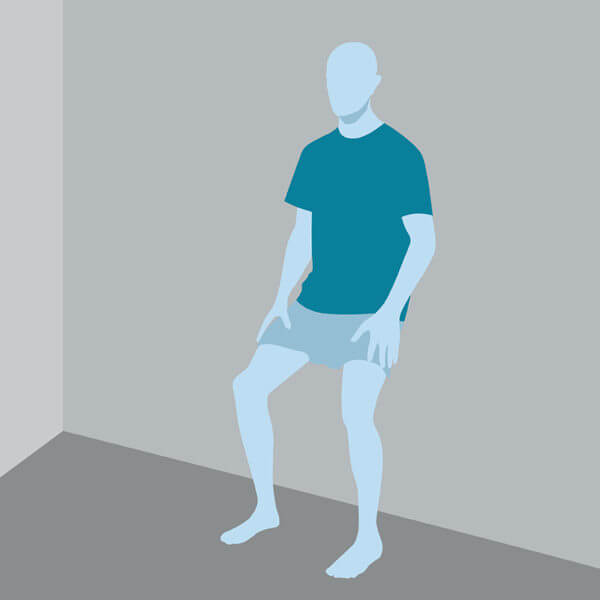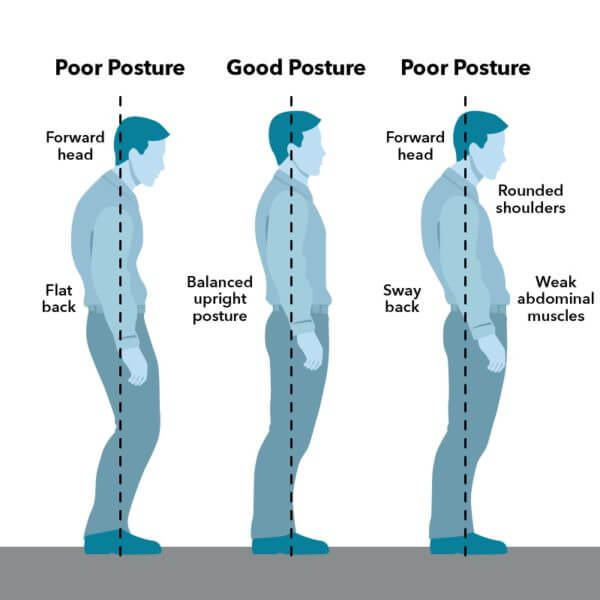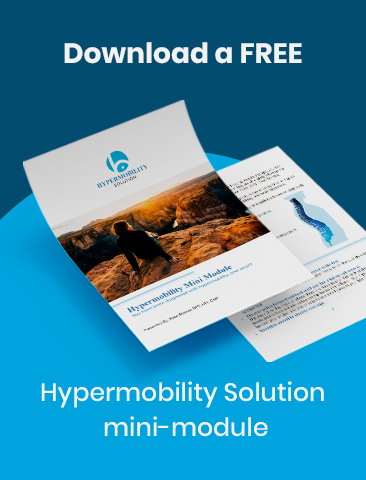Did you know that posture and positioning are pivotal when it comes to hypermobility symptom management?
An important thing to remember is that the better your position is, the less strain there is on the muscles holding you up. A better position also means less force through your joints.
Besides less strain and muscle spasms, good posture can also improve other things. These improvements can include improved mood, decreased pain, improved breathing, and ease of movement.
In this article, we will discuss:
- A healthy back natural curves.
- What good posture means.
- How to know where “straight” is.
- How to maintain good posture
A healthy back natural curves
A healthy back has three natural curves, and good posture helps keep these natural curves:
- An inward curve at the neck.
- An outward curve at the upper back.
- An inward curve at the lower back

What good posture means
Almost everyone that I know will gladly admit that they should use better posture but don’t necessarily know what “good posture” really means.
Good posture and positioning require three things:
- The ability to get to straight,
- Knowing where straight is and,
- The strength to hold it there.
The ability to get to straight
Have you ever checked to see if you can “get to straight?”
- Try standing with your back flat and feet 12 inches away from the wall.
- Place your low back on the wall, roll your spine up the wall, and then pull your head straight back until it touches the wall, but don’t let your low back come away from the wall.
- You can’t arch your back to get your head to the wall.
- Hold this position; feel how you have to activate muscles to hold 1 area while you move another and how they work together.

Knowing where straight is
With posture and positioning, knowing where straight is and where we think it is are sometimes different. Now, as you step off the wall, you want to:
- Stand with weight evenly on both feet and centered in the foot, not forward on the toes or back on the heels, and NOT on the outside edges of your feet.
- Tilt your pelvis forward and back until you find what we call neutral. This should be the position where there is a curve in your low back, and the hip bones on the front are just below the hip bones in the back.
- Your hips should now be over your ankles, and you should have a slight curve in your low back.
- Your shoulders should be directly over your hips.
- Rotate your arms, so your palms are facing forward; you should feel your shoulder blades move closer together.
- Chin back and your ears directly over your shoulders. Think of growing taller like a string is pulling up on the top of your head but keep your chin level.

How to maintain a straight posture
Getting to straight is one thing; holding that position for the next 8-12 hours is entirely another:
- How long can you stay here? Hold this position and walk.
- Every time you stand up out of a chair, try to stand with a good posture initially. This way, you will keep returning to it, and it will become your standard and gradually build strength.
- Strength exercises also help to use these weak muscles.
If you are looking for Hypermobility resources, feel free to check out my blog.
Are you looking to manage your Hypermobility symptoms?
Check out the Hypermobility Solution, the Hypermobile Neck Solution, and Hypermobility 101.

About Kate

Kate Skinner is a Doctor in Physical Therapy, co-founder of Great Divide Physical Therapy, and creator of Hypermobility Solution.
Recent Posts


